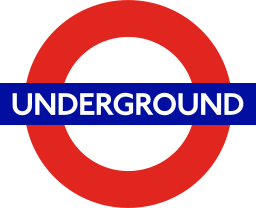For many people who live in London, the Underground system is something which is vital to their everyday lives. The underground system that people are familiar with today has come a long way from the earliest underground system, and the history and development of the tube is a fascinating one.
The Early Days of the Underground
London’s rapid population growth as part of the industrial revolution meant that the roads and above ground railway stations could become very congested at times. To reduce this congestion, an underground railway system was proposed in the mid 1830’s. In 1854, the Metropolitan Railway was given the go ahead to create a 6km line, running between Paddington and Farringdon Street. This line would go on to become the world’s oldest underground railway. Due to difficulties in raising the required funds, construction did not start until 1860, but then progressed quickly until the project opened to the public on 10 January 1863. Within the first year, the line carried over 9.5 million passengers.
The obvious popularity and success of the Metropolitan line spurred on a number of other applications for other underground lines, and permission was soon granted for the construction of the Circle line, which aimed to connect a number of over ground termini together. This huge, 17km project was not completed until 1884.
By 1890, The City and South London Railway company finished construction on a line which ran from King William Street to Stockwell, passing under the River Thames. Whereas other lines at the time still used steam locomotives, this line ran trains on an electrified rail, and was the first deep-level electric railway in the world.
The Underground in the Twentieth Century
Once it had been confirmed that it was possible to run an electrified train underground, the owners of other existing lines began to consider the option of electrification. Smoke-filled carriages and stations were unpopular with passengers, but they had previously been seen as the only feasible option. By 1905, the District and Circle lines had been completely electrified. The rest of the network continued to expand, albeit under the private ownership of various different companies.
In 1908, the name “Underground” was introduced and began to be used in stations to promote the system. The iconic roundel symbol was also introduced in the same year.
During the 1920s, work began to modernise the entrance and exit ways of busy stations. Whilst most stations had either steps or lifts, these proved to be very impractical during busy commuter periods, and often led to backlogs of people on both the platform and the street. Where possible, escalators were put in instead. Escalators had already been successfully used at Earl’s Court station, since 1911.
The onset of the Second World War saw many underground stations being used as air raid shelters, and as storage facilities for treasures from the British Museum. On 3rd March 1943, 173 people were killed at Bethnal Green tube station as people rushed to enter the station to shelter. A woman and child fell near the bottom of the stairs, causing others to fall around them. As people continued to enter the station to escape the impending air raid, those already inside were crushed. This was the largest single loss of life in the history of the London Underground.
The Moorgate tube crash on 28th February 1975 was another significant accident. A busy train failed to stop at the final station on the line, instead continuing through the tunnel and crashing into a wall at the end of the tunnel, resulting in the deaths of 44 people. Whilst the cause of the accident could not be confirmed, it did prompt the introduction of a new safety system, which would automatically stop the train at a terminus station if the driver failed to manually brake correctly.
The Twenty-first Century and Beyond
The London Underground continues to expand and change. In 2003, the Oyster card was introduced, to allow city dwellers to have more freedom with their travel, and to help to reduce their costs. This payment system also helped to reduce the number of people forced to buy tickets at the station.

